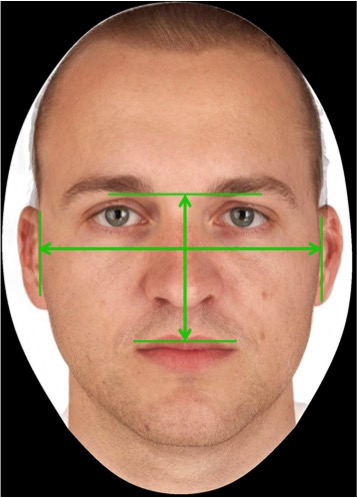The Face of Leadership: How CEOs’ Facial Appearance Predicts Business Success
Is your face your fate? Why leaders look like leaders
The hiring and selection of business CEOs can be a fickle process with plenty of lateral movement across companies (Brickley, 2003). This is substantially less frequent in law firms, however. All law firm managing partners (MPs; the analogue to a company’s CEO) must have completed law school, done well enough to get hired at a firm, made partner at that firm, and then ascended the ranks to become its leader (Galanter & Palay, 1991). This is a steep ladder to success that typically cannot be assisted by one’s name or family connections (as may be the case with CEOs of Fortune 1000 companies, such as the Ford dynasty). It is a safe assumption that the leaders of America’s top law firms are an elite group of highly competent individuals. Yet, just as with the Fortune 1000 CEOs, people can also predict the profitability of law firms from the faces of their MPs (Rule & Ambady, 2011a). More striking, MP’s current facial appearance not only predicted the recent success of the US’s top 100 law firms, but photos of the MPs from their undergraduate yearbooks predict their firms’ current success just as well (Rule & Ambady, 2011b). This is remarkable, as college yearbook photos would have been taken before the MPs even entered law school, possibly before they even applied. This suggests that there is something static and stable about facial appearance that leads to these relationships. Such relationships could even be biologically-based. For example, the same hormones that shape the development of a person’s face are also involved in the development of some aspects of personality (Fink et al., 2005; Fink, Manning, & Neave, 2004). Thus, the same biochemical process that makes someone look like a leader may also give him or her the personality to become one. Indeed, one study has shown that facial width-to-height ratio (fWHR), a physical facial measurement associated with testosterone in men (Lefevre, Lewis, Perrett, & Penke, 2013), predicts company profit when measured in the faces of CEOs of successful large-scale businesses with simple leadership hierarchies (that is, where the CEO yields a great deal of firm decision-making power; Wong, Ormiston, & Haselhuhn, 2011); see Figure 2.
 Figure 2. An example of facial width-to-height (fWHR) ratio measurements. Research revealed that fWHR correlates with company financial performance in a sample of CEOs whose companies have low management complexity (Wong et al., 2011).
Figure 2. An example of facial width-to-height (fWHR) ratio measurements. Research revealed that fWHR correlates with company financial performance in a sample of CEOs whose companies have low management complexity (Wong et al., 2011).
One possibility that arises from this reasoning is that more successful companies may hire more “successful-looking” CEOs. One unpublished study found that judgments of CEO competence do not correlate with companies’ return-on-assets (ROA) after controlling for several related variables, including the company’s ROA under the previous CEO (Graham, Harvey, & Puri, 2015). Other studies, however, have found that CEOs’ facial shape predicts their companies’ ROA when controlling for the organization’s ROA before they were hired (Wong, Haselhuhn, & Ormiston, 2011), and that ratings of leadership from CEOs’ faces predict their companies’ profits when controlling for the profits of their predecessors and successors (Re & Rule, 2015). These studies suggest that, although more successful firms may hire successful-looking leaders, there seems to be a kernel of truth in the leader-like appearance of prosperous CEOs.
Context counts – moderators in facial appearance and leadership
Economic climate. There are conditions that moderate the relationship between facial appearance and CEO success. For example, the global recession of the late 2000s had deleterious effects on the economies of most nations in the world, which took years to recover (Imbs, 2010; Verick & Islam, 2010). One study demonstrated that judgments of leadership and personality traits of American CEOs’ faces could predict company profits in the fiscal years leading up to the recession (2005-2008), but not in the years immediately following it (2009-2011; Rule & Tskhay, 2014). This suggests that the facial characteristics associated with CEO success may have changed after the financial collapse in the U.S., when executive strategies were likely radically altered (Williamson & Zeng, 2009).
To confirm that this change was related to the economic crisis, the researchers conducted a second study to see whether facial traits still related to CEO success following the crisis in a country that was relatively unscathed by the recession: Germany. Germany endured the economic crisis much more successfully than other Western nations, and the German economy recovered at a much faster rate (Burda & Hunt, 2011). Interestingly, judgments of the personality traits that correlated with American CEO success before the financial crisis predicted German CEO success after the financial crisis (Rule & Tskhay, 2014). The relationship between judgments of faces and CEO success in U.S. companies therefore seems to have been weakened by the unstable economic climate of the late 2000s. In all, these studies suggest that the relationship between facial appearance and CEO success is moderated by economic context, and disrupted by harsh financial climates.


